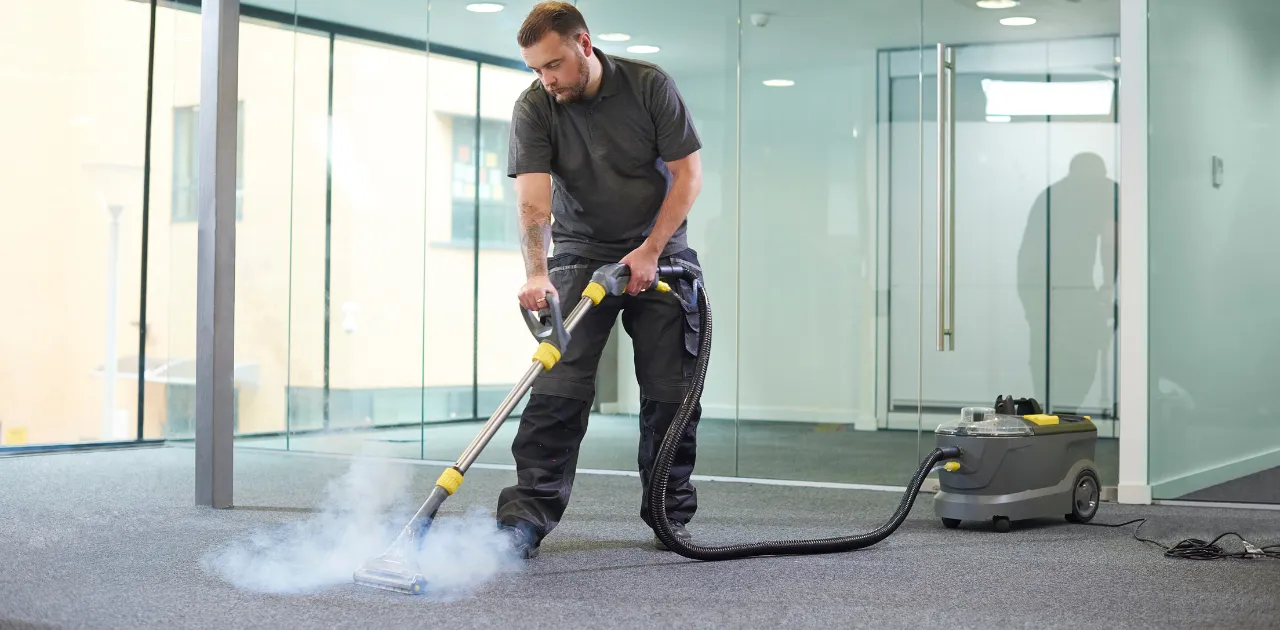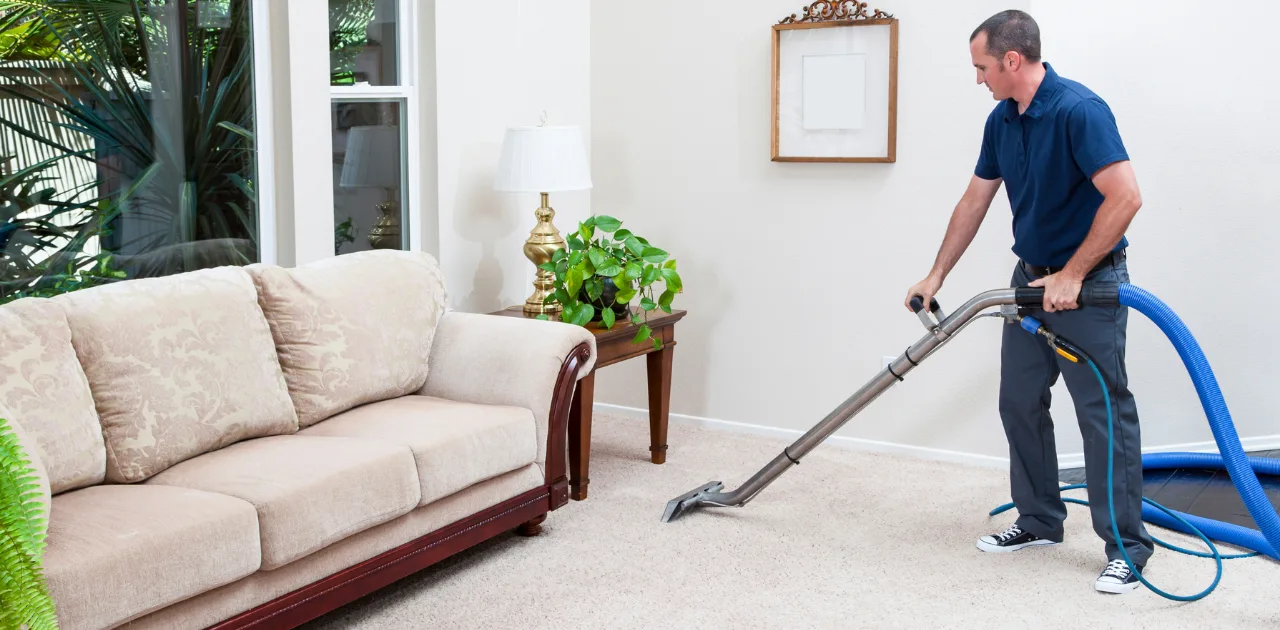Is Steam Cleaning Safe for Hardwood Floors? It’s a common question, and the answer involves a careful balance. While steam cleaning seems convenient for a deep clean, it brings potential risks to your cherished hardwood floors.
Here’s a brief overview: According to major wood flooring associations, steam cleaning isn’t safe as it can lead to moisture absorption and wood damage and may void warranties. However, steam cleaning can be an option if you have sealed solid hardwood floors and use caution.
In this exploration, let’s look at the benefits, potential pitfalls, and alternative cleaning approaches to determine whether steam cleaning aligns with the longevity and aesthetics of your hardwood flooring investment.
Benefits of Steam Cleaning for Hardwood Floors
Let’s dive into the benefits of steam cleaners for floors (hardwood):
- Non-toxic and Chemical-Free: Steam cleaning uses water and steam, making it an eco-friendly and chemical-free way to clean your hardwood floors.
- Effective Germ and Bacteria Elimination: The high temperatures from steam cleaners can kill germs and bacteria, giving you a hygienic cleaning solution.
- Easy to Use: Steam cleaners are easy to use, making the cleaning process more convenient by reaching into cracks and crevices for a thorough clean.
But Here Comes the Question: Is Steam Cleaning Safe for Hardwood Floors?

To be specific, there are some potential problems with steam hardwood floor cleaners. Let’s explore the following:
Moisture Absorption
Different steam cleaners are available for floors, with some claiming to be specifically for hardwood. However, the truth is that they can harm your floors. A steam cleaner uses hot vaporized water to clean and disinfect floors, reaching into cracks to kill germs. But, on hardwood, this moisture can linger, causing potential damage due to hardwood’s naturally absorbent nature, leading to —
- swelling,
- warping,
- twisting,
- and mold.
Despite assertions from certain steam cleaner manufacturers, major wood flooring associations recommend against using steam cleaners on hardwood floors.
Wood Seams Vulnerability
Even if the wood is sealed well to keep moisture out, the seams between the planks can still be at risk. Initially, these seams are sealed during the application of top sealers. However, over time, as the wood moves or contracts due to use and weather, the seal can crack. This cracking allows moisture to enter from below, posing a threat to the floor.
Impact of Steam
The steam from a steam cleaner poses a special issue with hardwood. Water is thick, but steam is light and thin, easily getting into even tiny cracks on a surface. It can travel down the sides of hardwood planks or seep up from underneath, affecting the floor from all vulnerable angles. When the steam cools and turns back into water, it creates moisture that can harm the wood fibers.
Warranty Void
Many hardwood floors have a warranty from the manufacturer or retailer. It specifies how long the floor should last with regular use and promises a replacement if there are structural issues. These warranties have clear conditions on actions that can cancel their protection. Read carefully to check if steam cleaning is allowed under your floor’s warranty.
Steam Cleaners “Designed” for Hardwood
Some companies sell steam cleaning machines claiming to clean hardwood floors safely. They say these machines absorb excess moisture, leaving the floor dry, especially if it’s properly sealed. However, major wood flooring associations unanimously advise against using steam cleaners on any hardwood surface.
Even though these machines exist, no reputable hardwood providers recommend them. The National Wood Floor Association (NWFA) warns that steam or too much water may harm wood floors. The World Floor Covering Association, or WFCA has the same caution against excessive water use.
Consumer Reports mentions that, in tests, all steam cleaning machines left residual moisture, potentially causing damage to even the smallest cracks in a hardwood floor’s surface seal.
If You Do Use a Steam Cleaner
If you decide to use a steam cleaner, be aware that all steam cleaners have a warning. Before using them on hardwood, ensure the floor seal is intact. You can check this by dripping a small amount of water on the surface. If the water forms beads, the seal is good.
But if it spreads or soaks into the wood, the seal is compromised and needs reapplication. A thicker and more durable sealed finish provides better protection against steam damage.
WARNING: The seal quality can vary across the floor, so test it in multiple places to ensure overall integrity.
How to Steam Clean the Sealed Hardwood Floors:
Before you start steam cleaning, always make sure to vacuum your floors first.
- Use the lowest steam setting and move the cleaner quickly to avoid saturating the wood.
- Opt for microfiber pads instead of abrasive ones to prevent scratches.
Choosing the Right Cleaning Method for the Hardwood Floors

You can still keep the hardwood floors clean and shiny without risking the bad effects of a steam cleaner. Here’s how:
- Mop Magic: Use a microfiber mop dampened with a wood floor cleaner specifically designed for your type of finish.
- Regular Dusting and Vacuuming: Use a broom or a microfiber dust mop every day to avoid scratches from dirt, dust, and crumbs. Vacuum regularly with a soft brush attachment to remove debris without causing harm.
- Spot Cleaning: Act quickly on spills with a soft, absorbent cloth or damp paper towel, followed by a dry buff. This prevents liquids from sitting too long and dulling the finish.
- Deep Cleaning: When you need a thorough cleaning, go for a cleaning solution made for hardwood floors and use a dry microfiber mop.
- Vinegar Power: For a streak-free shine, mix equal parts white vinegar and water in a spray bottle and lightly mist the floor before mopping.
Remember: Prevention is key! Regular cleaning with gentle methods will keep your hardwood floors looking their best for years to come.
Wrapping Up
To wrap things up, when thinking about “Is Steam Cleaning Safe for Hardwood Floors?” it’s clear that being careful is very important. Even though some makers say it’s safe, the risks of possible water damage, harm to seals, and canceling warranties make using a steam cleaner questionable for hardwood. The advice from major wood flooring associations underscores the importance of alternative cleaning methods to ensure the longevity and beauty of your hardwood floors. While steam floor cleaners may have their merits for certain flooring types, it’s crucial to prioritize the safety and well-being of your hardwood investment.
FAQs
Can I safely use a steam mop on engineered wood floors?
No, avoid using a steam mop on engineered wood floors. The heat and moisture can damage the adhesives and cause warping or delamination. Stick to damp mopping with specific wood floor cleaners for safe cleaning.
Is it safe to steam clean an area rug on a hardwood floor?
No, it’s not safe to steam clean an area rug on a hardwood floor. Excess moisture can harm the hardwood, even under rugs. Consider safer methods like professional cleaning or spot cleaning for area rugs on wood floors.
Can you use a floor steamer on hardwood?
Only use a floor steamer on sealed solid hardwood with extreme caution. Unsealed or engineered wood floors risk warping and damage. Consider safer cleaning methods if unsure.
Can professionals safely use steam on wood floors?
Professionals might use steam on sealed solid hardwood if they control moisture, test first, and have expertise. It is not recommended for unsealed or engineered wood due to high damage risk.
How often should you steam clean your floors?
Clean your floors with steam once a week. If you have pets, kids, or big events, consider doing it more often.






